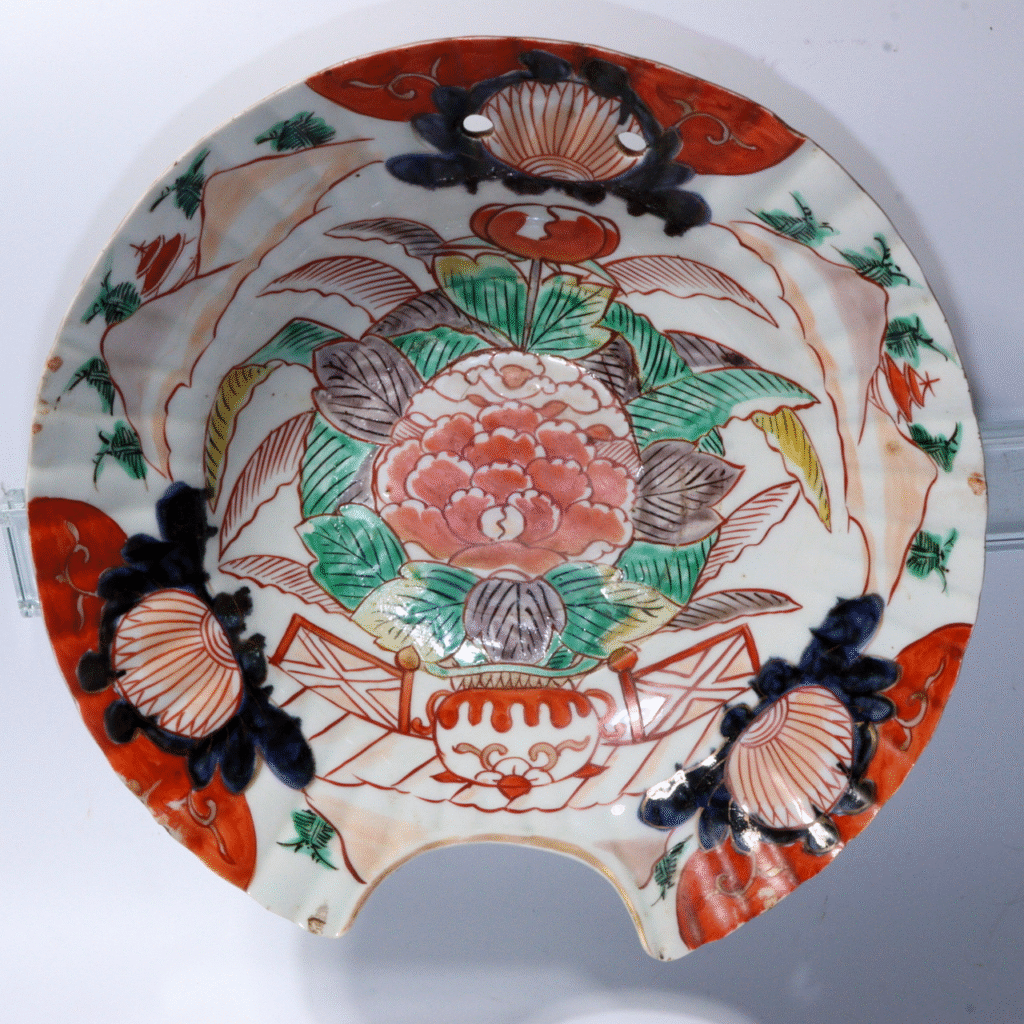
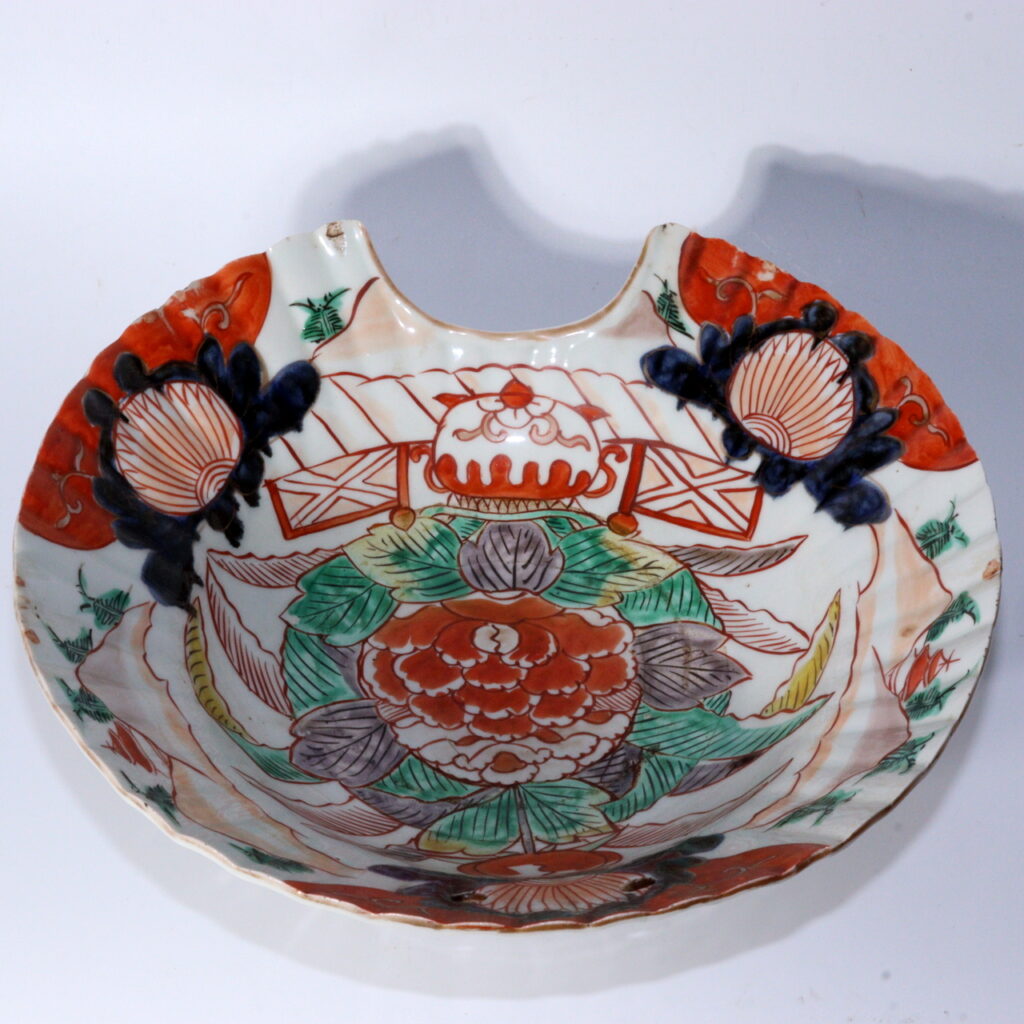
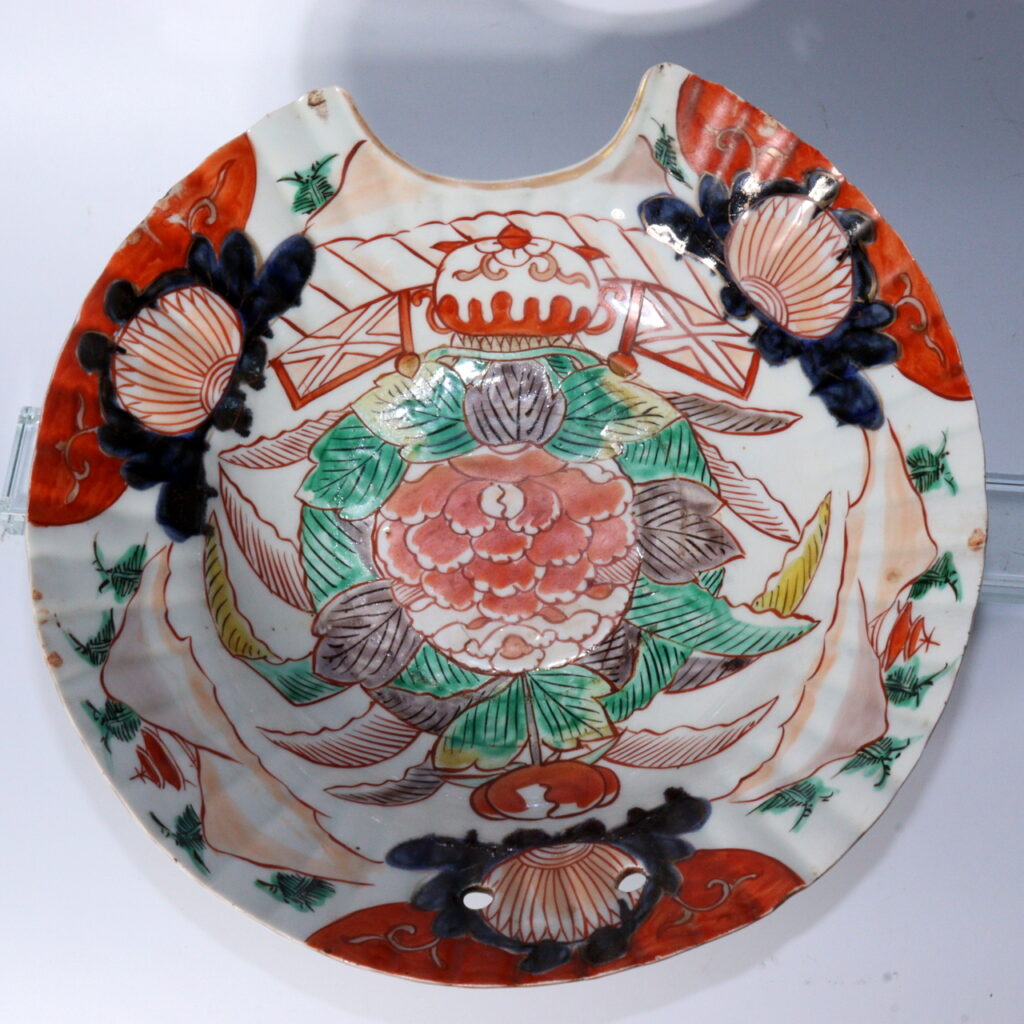
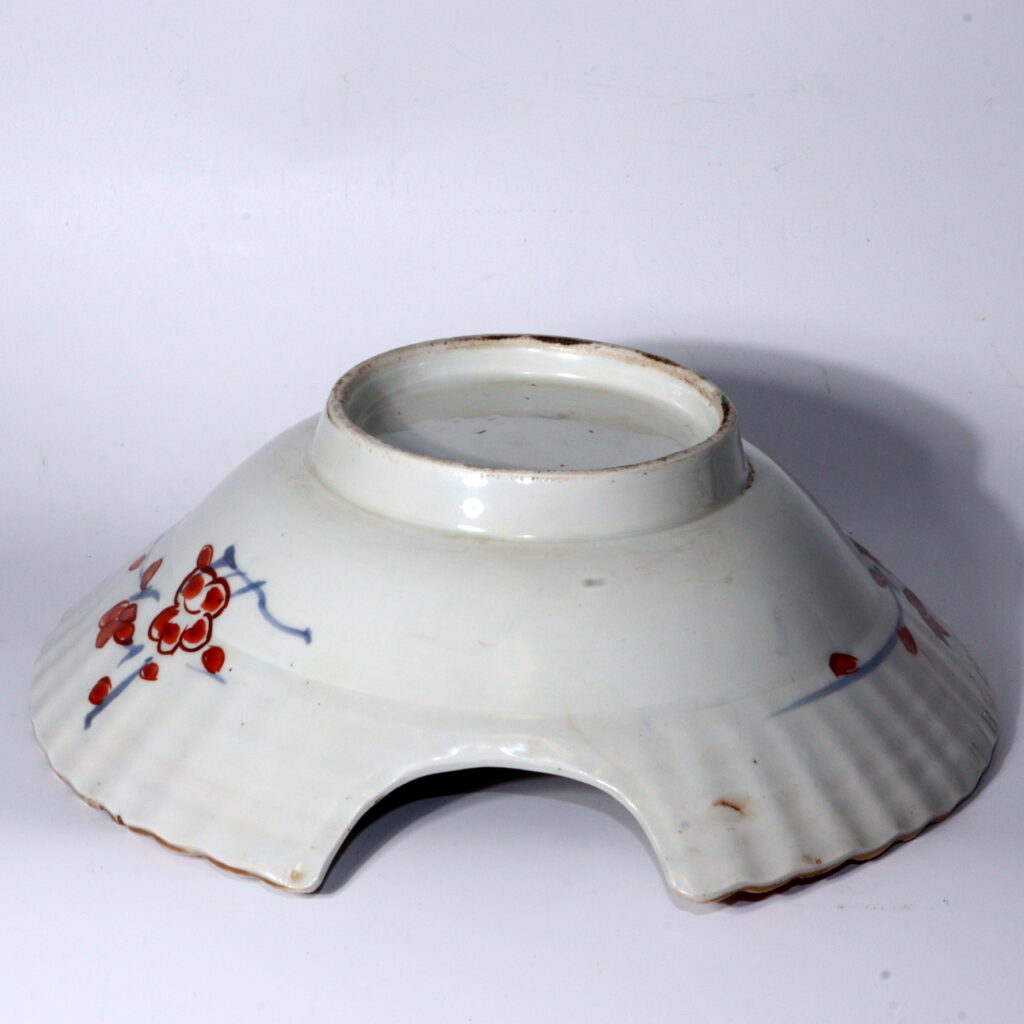
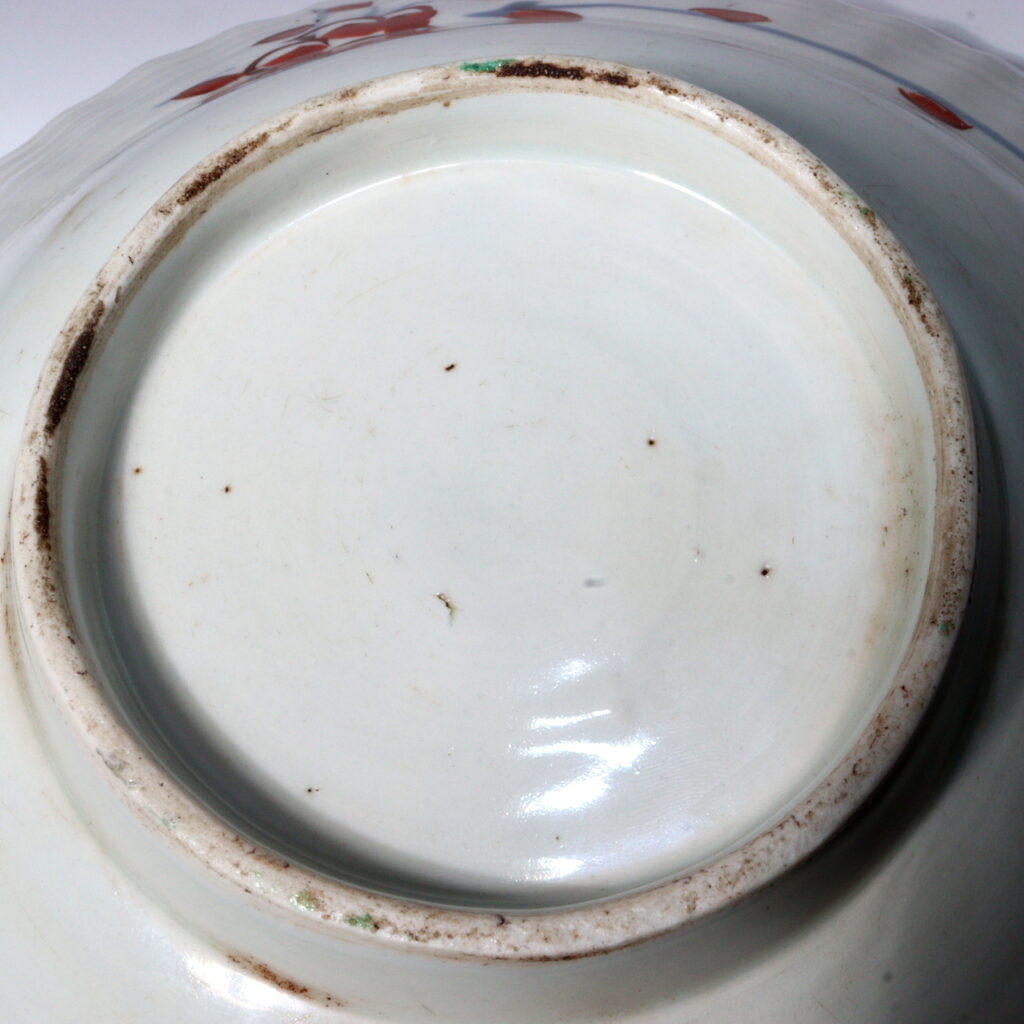
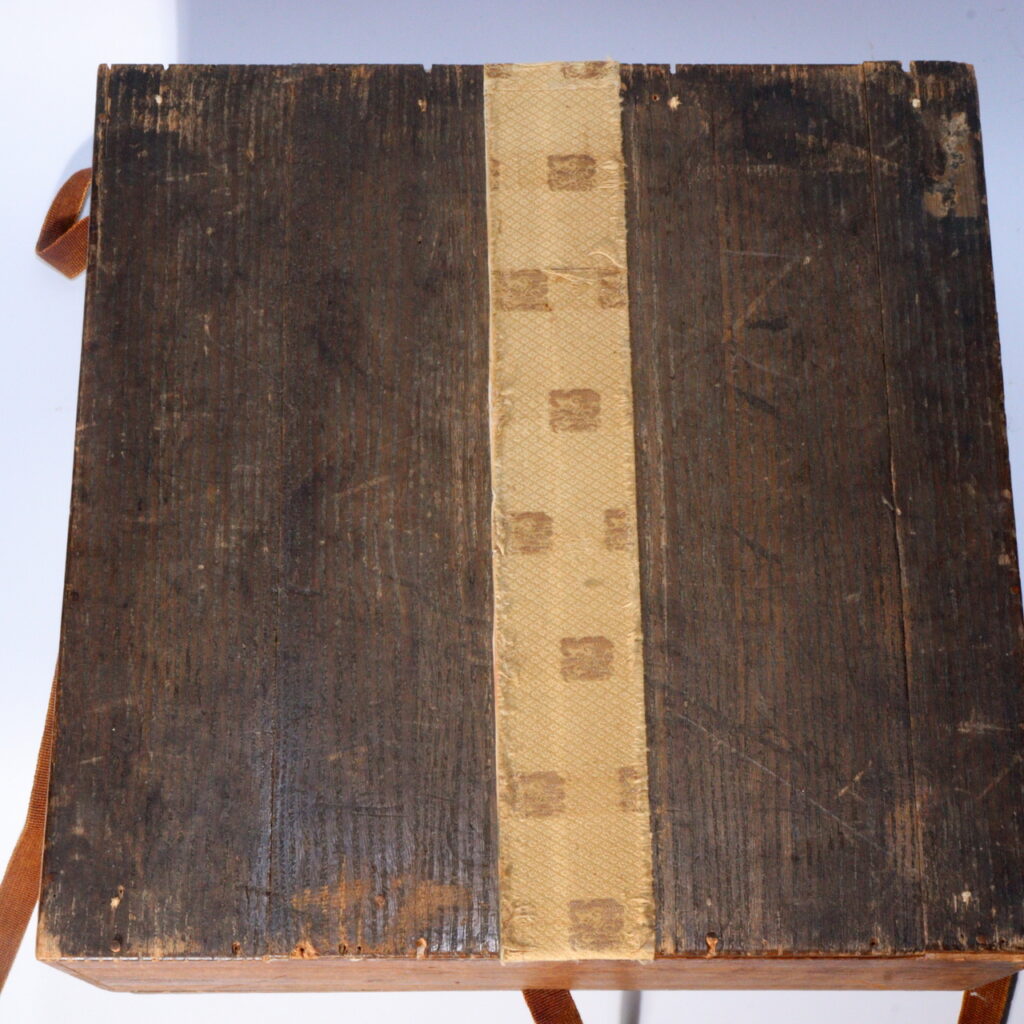
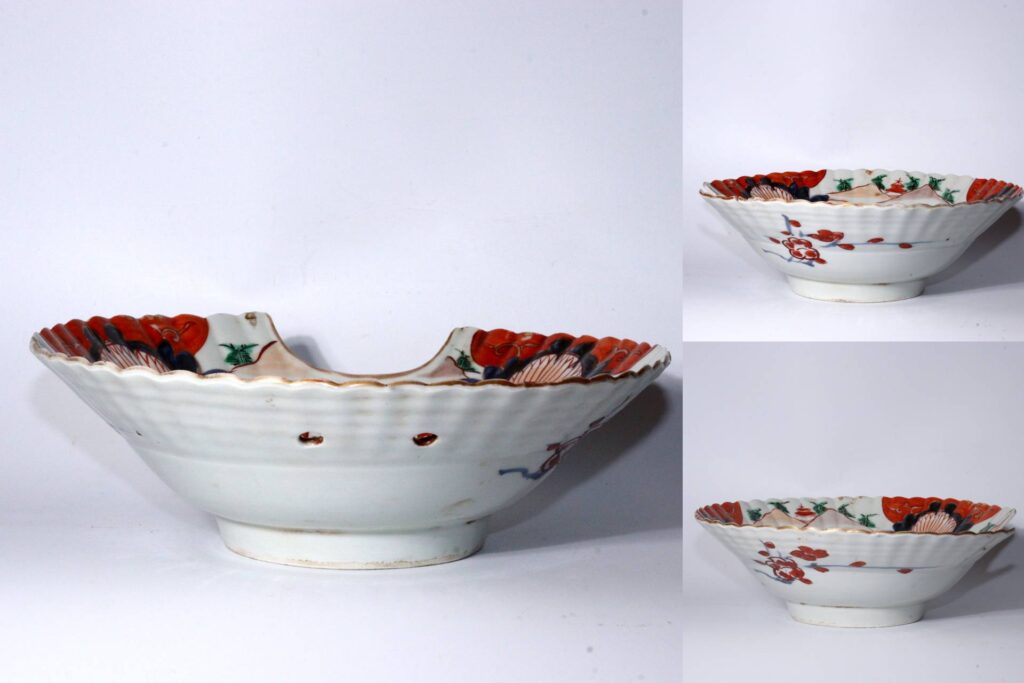
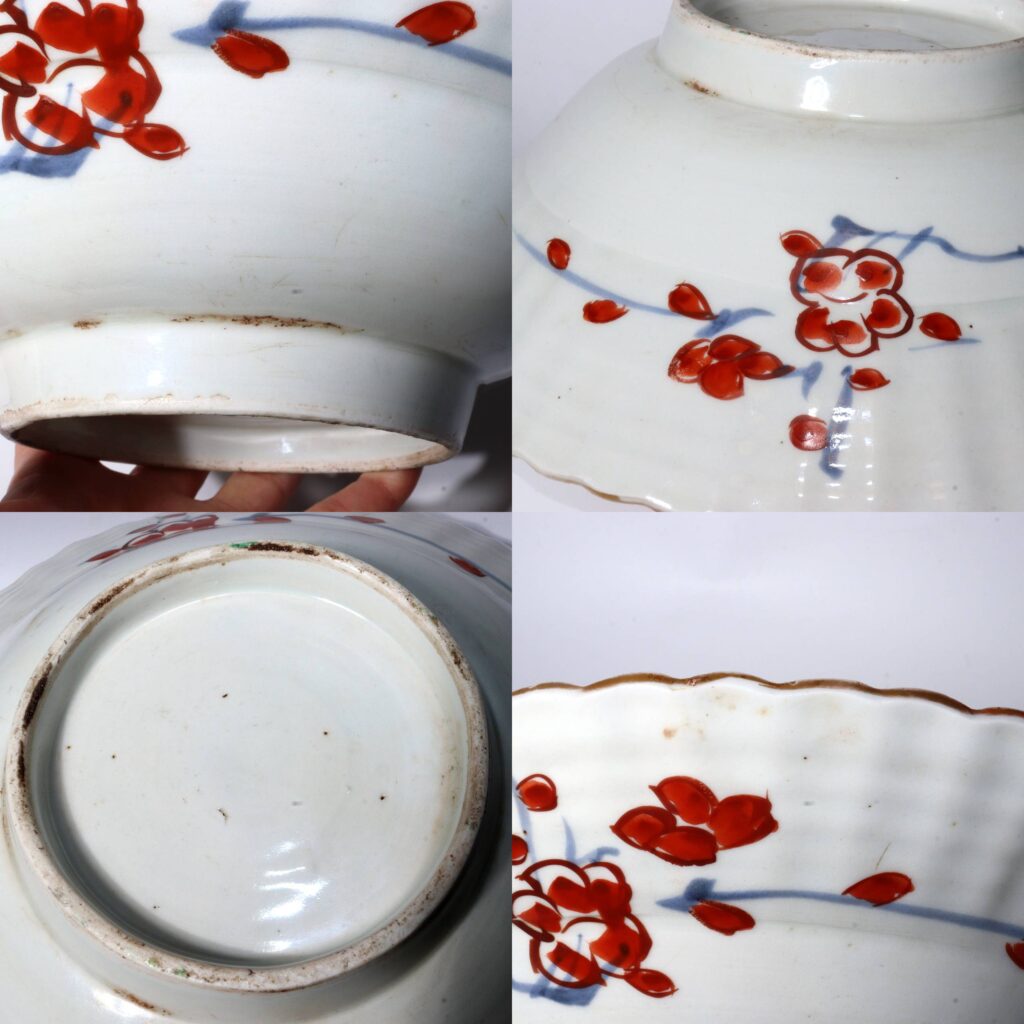
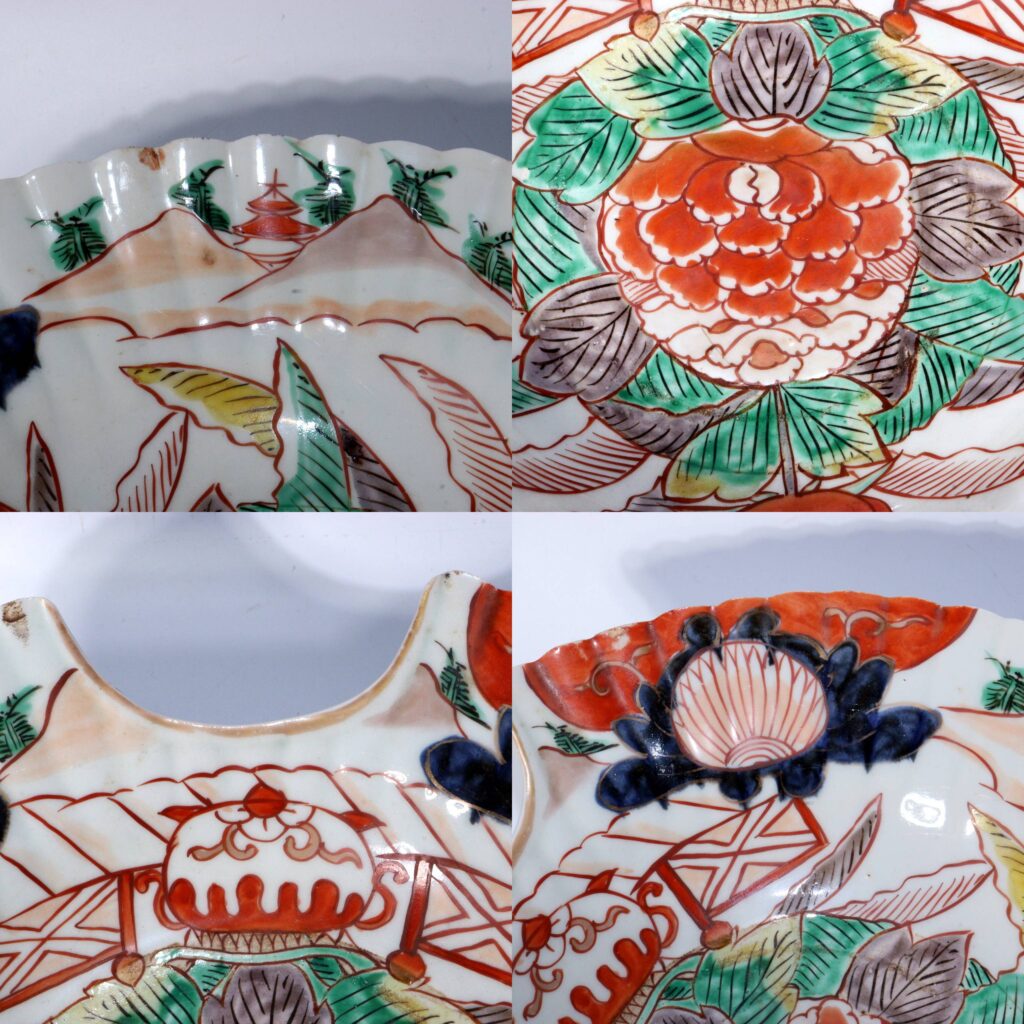
Few artifacts in the world of Japanese antiques capture the elegance of East-West exchange as poignantly as this Ko-Imari polychrome shaving bowl, or Higezara. Dating back to the Genroku Era (1688–1704) of the early Edo period, this piece is a fascinating embodiment of both utilitarian design and artistic excellence.
The Story Behind This Item
The term Higezara (髭皿), meaning “beard plate,” refers to a form of bowl believed to have been used by European gentlemen for shaving. Its defining feature—a semi-circular cutout—allowed the user to rest their chin comfortably while collecting water. These pieces were not part of traditional Japanese domestic use, but were instead crafted specifically for export to Europe, reflecting Japan’s participation in the early international porcelain trade.
Interestingly, some historians also suggest that these bowls were used as bloodletting receptacles (shaketsu) in medical treatments during the same period. Regardless of their function, their striking aesthetic and craftsmanship made them popular as decorative wall hangings in European homes—turning functional ceramics into objets d’art.
This particular example, adorned in soft green, orange, and indigo polychrome over a smooth white porcelain body, typifies the high-quality Arita ware exported during the Genroku period.
Highlights and Unique Features
- Origin: Arita kilns, Japan – Genroku Era (1688–1704)
- Material: Fine white porcelain with hand-painted polychrome overglaze
- Design: Deep bowl with a chin-rest notch, used for shaving or ritual use
- Decoration: Traditional Ko-Imari colors—pale green, soft orange, deep indigo
- Functionality and Aesthetics: Rare balance of practical utility and elegant design
This Higezara bowl is not merely a vessel—it’s a historical conversation piece that bridges cultures and centuries.
Why It Appeals to Collectors
For collectors of Japanese ceramics, especially early Imari ware, this piece represents a significant find. Its cross-cultural role—produced in Japan but designed for European use—offers a compelling narrative that sets it apart from domestic wares. It also aligns with the broader global interest in kintsugi, mingei (folk craft), and the legacy of Arita porcelain, renowned for its early export history.
Its well-preserved colors, form, and surface clarity make it not only a scholarly object but also an ideal candidate for display in galleries, museums, or private collections.
Conclusion and Where to Find It
This rare Ko-Imari Higezara is more than just a shaving bowl. It is a lens into Edo-period craftsmanship, a symbol of early global commerce, and a testament to how art and utility can coexist harmoniously. Whether you are an academic, a ceramic enthusiast, or an interior connoisseur, this piece is a chance to own a remarkable moment in Japanese ceramic history.
If this item has already sold, please explore other rare treasures here:
🔗 Browse the Koedo Sun Art collection